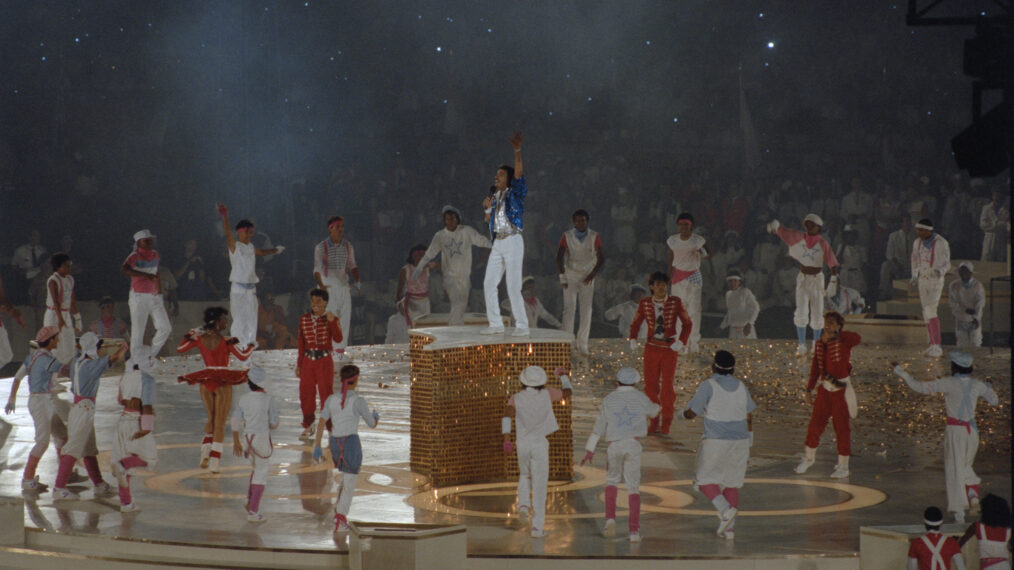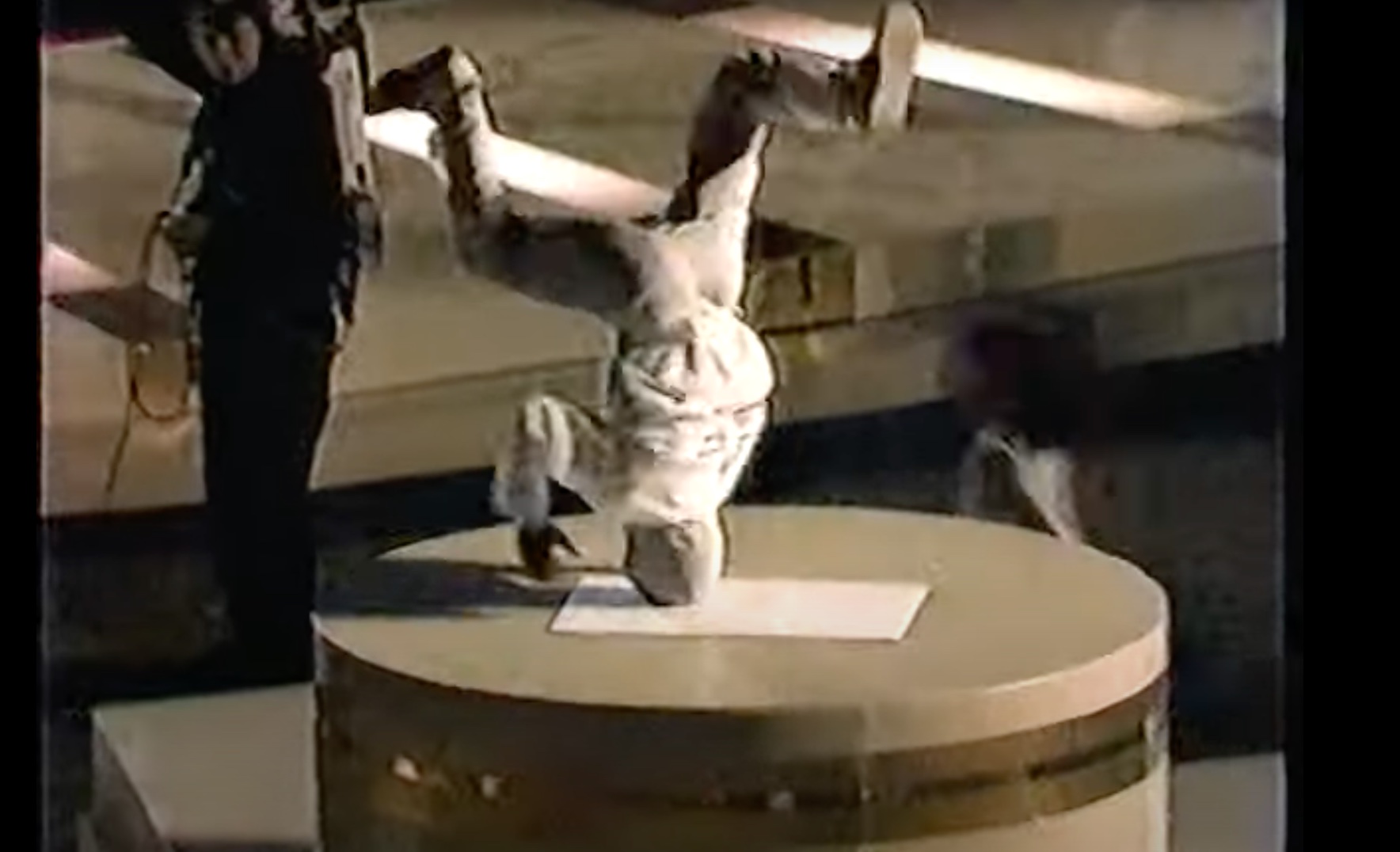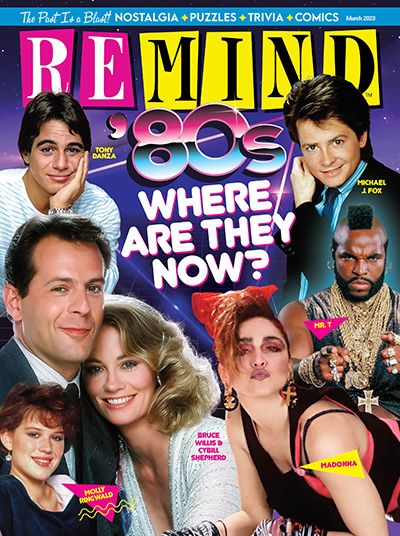Breakdancing (Breaking) May Be New to Olympic Competition, But It Was Memorably Spotlighted at the 1984 Summer Games

“Who knows,” wonders the journalist behind a 1984 report seen in the video below, which is about breakdancing in general and famed b-boy group the New York City Breakers in particular, “maybe someday, [breaking] will be an Olympic sport.”
That thought comes near the end of her report, and just ahead of her comment, one of the Breakers specifically references that year’s Summer Olympics in Los Angeles when he throws down this gauntlet:
“Me and my whole crew — we challenge the 1984 gold medal winners in the gymnastics floor exercise to a competition. We’ll see you in L.A.”
This report offers a cool look at the intersection of art and athletics involved with breakdancing, and it’s no surprise that the reporter, or anyone being introduced to breaking through watching her story, would realize that the talents it takes can be honed to Olympian levels, or that accomplished breakers such as the young men featured here would feel confident enough to put their strength, flexibility, balance, coordination and agility up against the similar skills of champion gymnasts.
It’s been 40 years since breaking and the Olympics were mentioned in the same breath in this report, but at the 2024 Summer Games in Paris, B-boys and B-girls will be able to showcase their artistry and athleticism as they finally compete on the Olympic stage for the first time.
Thirty-three breakers from 16 National Olympic Committees around the world, including four athletes from the United States, will vie in two medal events, one each for men and women, with b-boys and b-girls facing off in solo battles to get judges’ votes. The events take place Aug. 9 and 10, 2024.

Public Domain
Official pictogram for the new Olympic sport of Breaking
Breaking’s appearance as an Olympic medal sport will likely give it a presence in the wider culture at large that it has not had since about 1983-84.
Of course, breakdancing had been a big part of hip-hop culture for many years before that time, especially among people of color in urban centers like New York City and Los Angeles. But a lot of people like myself (i.e., white suburbanites) only started becoming aware of it in the early ’80s, thanks largely to music, music videos and movies.
Flashdance (1983) likely gave many people their first look at breaking and some of the moves involved with it.
>> Kurtis Blow Celebrates His Birthday … With Olympic Breakin’!
By 1984, breakdancing had reached peak exposure in major pop culture. During that year alone, there were four notable movies, of varying degrees of quality, that incorporated breaking culture into their storylines and often featured people from the real breaking scene, like the New York City Breakers.
There was Breakin’, released in May of ’84, which ended up being fairly successful. It was the No. 17 highest-grossing film of the year, pulling in a little under $39 million, just a bit less than the No. 16 film, Revenge of the Nerds, but outperforming titles like Bachelor Party, Red Dawn, Friday the 13th: The Final Chapter and The Terminator.
By the time the inevitable sequel, Breakin’ 2: Electric Boogaloo, was quickly released in December ’84, the magic might have been over. Boogaloo grossed a little over $15 million, and its terrific subtitle may have had a more lasting cultural influence than the film itself.
Sandwiched between the two Breakin’s during 1984 were two other films. There was Beat Street, which was released in June and grossed about $16.6 million, a decent amount considering it faced tough competition that summer from the likes of Ghostbusters, Indiana Jones and the Temple of Doom, Gremlins and more.
There was also Body Rock, led by Lorenzo Lamas and released in September. I would have expected a film produced by the Roger Corman-founded New World Pictures to have been more ahead of a trend, but whether it was timing or just a bad production (I haven’t seen it myself), Body Rock only grossed about $1.7 million.
Later in 1984, I had a more personal experience with just how athletic breakers are. By that time, breaking had expanded even into the junior high of my small Wisconsin town, where I was in ninth grade. Outside during lunch, I would sometimes watch with awe how some of the other students performed breakdancing moves.
At one point, during a Wrestling unit in gym class, I actually faced one of these fellows on the mat. I was never much good at wrestling in general, but trying to get any sort of upper hand against this guy was impossible, given how flexible, limber and strong he was. He twisted his body to ridiculous degrees to escape holds, exercising the sort of body control I’d seen him use while breakdancing. It’s still quite impressive when I think back on it.
About a month and a half before Body Rock came out, breakdancing had what may have been its most high-profile exposure of 1984, even beyond the several movies in which it played a part.
On Aug. 12, 1984, during the closing ceremonies of the Summer Olympics in Los Angeles, music superstar Lionel Richie wowed a worldwide audience with an extended version of his hit song, “All Night Long (All Night).”
Richie tweaked some of the tune’s lyrics to reflect the Olympic spirit, thank the athletes for coming and send them off, and the artist was a terrific ambassador for his home country as we passed the Olympics hosting torch on to Seoul, South Korea, for the 1988 Games.
The “All Night Long” performance also served to showcase, on an international stage, the talent and artist of the many B-boys and B-girls who accompanied Richie as backup dancers, like the young man head-spinning in the picture below:

Screenshot from youtube.com/@skillsone
This video shows highlights of the breakers and their moves during Richie’s performance. It’s a little funny hearing commentator Jim McKay (I think?) explaining things like “popping” and “locking” to the audience, but the host remains a true professional, and he sounds genuinely interested in the moves.
(As an aside, while I generally enjoy the coverage of the Olympics on NBC, where they have been for a long time now, does anyone else remember the Olympics being on ABC for many years, with McKay as a comfortable and familiar presence as the main studio host?)
Here’s a longer clip featuring more of Richie’s “All Night Long” and the dancers at the 1984 closing ceremony …
… and an even longer look at it (with bonus footage of brief clips from some other shows that the person who recorded this managed to capture at the time!)
While the breakdancers at this 1984 performance weren’t in formal competition, I think they helped set the stage, even if it took 40 years, for breakdancing to be recognized as a sport worthy of Olympics inclusion.
They showed not only the athleticism that is required to perform this art/sport, which has expanded to become loved and enjoyed around the world over the past 50 years, but they also demonstrated the ideals of youth, strength, joy, diversity and togetherness that most nations, at least in theory, attempt to strive toward and embody every four years at the Olympic Games.

’80s Where Are They Now
March 2023
Who can forget all the great TV shows, movies and music of the ‘80s? See what your favs are up to now!
Buy This Issue

